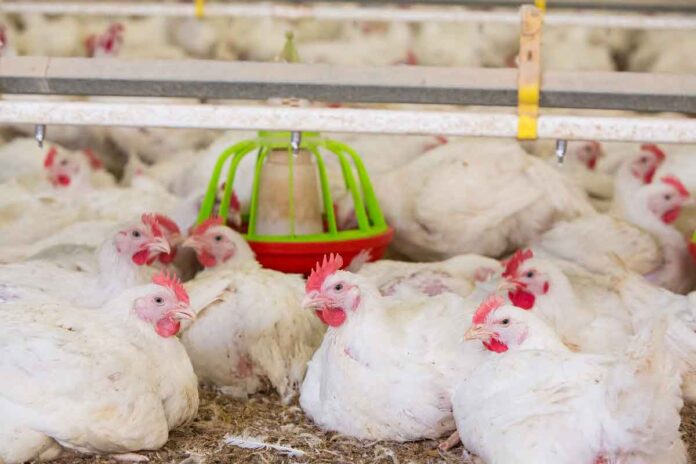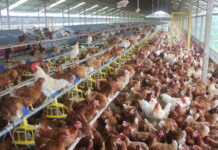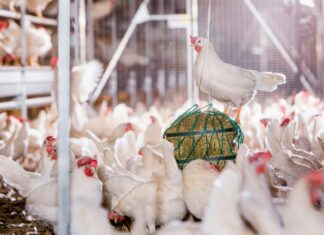
Animal Technicians at Pirbright have explored less invasive methods of identifying chickens in research environments.
This could improve the welfare of chickens in research and still provide an effective method to identify individuals during an experiment. The team explored using different leg bands as an alternative to the traditional wing band. Leg bands were assessed using several criteria including ease of application and adjustment, readability, interference with chicken mobility and cost.
It is hoped that this study will be able to provide guidelines for future experiments which will define leg banding specifications dependent on the age of the chicken and the length of the experiment.
Standardising these methods will help those working with chickens to provide the best level of animal care, while also ensuring accuracy when collecting scientific data from each bird.
To collect enough data to do this, leg bands were monitored on a daily basis for six months. This was essential due to the rapid growth of chicks and to ensure that none of the bands caused discomfort or became detached.
The Animal Technicians found that the bands needed to be replaced two to three weeks after the first leg band was placed. Based on the daily collection of data, they were also able to develop defined criteria for assessing leg band tightness which will be developed further into standardised criteria.
A poster summarising the work to date was displayed at the Institute for Animal Technology (IAT) Congress in March. This is an annual conference attracting over 400 delegates from the UK, Europe and USA which provided a great opportunity to showcase this potential refinement.
The Chair of the Institute’s Animal Welfare Ethical Review Body (AWERB) said: “This study highlights our Animal Technician’s commitment to improving the welfare of research animals and shows that if we can replace invasive methods with non-invasive ones, we would much rather do so. Continued efforts to improve methods and standardise procedures will not only help our animals but will also ensure our scientists collect accurate data. The AWERB have been really impressed with this study and would like to extend their appreciation to the poultry team.”
Source: The Pirbright Institute

















